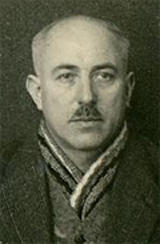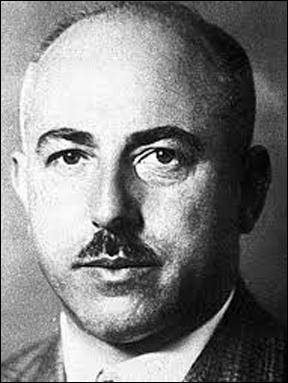Wilhelm Leuschner

Wilhelm Leuschner was born in Bayreuth on 15th June, 1888. After leaving school he became an engraver and as a teenager he became a member of his trade union. In 1907 he moved to Darmstadt, where he worked in a furniture factory. (1)
In 1910 he joined the Social Democrat Party (SDP). The following year he married Elisabeth Batz. After fighting in the First World War on the Eastern Front in 1916, he became a city councillor. Leuschner was a critic of both the German Communist Party (KPD) and Nazi Party (NSDAP) and in the 1920s he was considered a "political moderate". (2)
In 1924, Leuschner became a member of the Hesse Legislature (Landtag). In January 1933, Leuschner became deputy chairman of the German Trade Union Association. (3)
Adolf Hitler proclaimed May Day, 1933, as a national holiday and arranged to celebrate it as it had never been celebrated before. Trade union leaders, including Leuschner, were flown to Berlin from all parts of Germany. Joseph Goebbels staged the greatest mass demonstration Germany had ever seen. Hitler told the workers' delegates: "You will see how untrue and unjust is the statement that the revolution is directed against the German workers." Later that day Hitler told a meeting of more than 100,000 workers that "reestablishing social peace in the world of labour" would soon begin. (4)
The next day, Hitler ordered the Sturm Abteilung (SA) to destroy the trade union movement. Their headquarters throughout the country were occupied, union funds confiscated, the unions dissolved and the leaders arrested. Large numbers were sent to concentration camps. Within a few days 169 different trade unions were under Nazi control. (5)
Wilhelm Leuschner spent time in two concentration camps (Börgermoor and Lichtenburg) before being released in June 1934. Soon afterwards he became involved in the German Resistance to the Nazi government. His ownership of a factory with the patent to manufacture chrome beer pumps and non-corrosive screws, was used as cover for his activities. (6) Other members of his group included Julius Leber and Jakob Kaiser. (7)

Leuschner forged connections with the conservative and military resistance. He claimed they would be able to organize a general strike that would follow a military coup. Later the trade union group joined with Claus von Stauffenberg, Friedrich Olbricht, Henning von Tresckow, Friedrich Olbricht, Werner von Haeften, Fabian Schlabrendorff, Carl Goerdeler, Julius Leber, Ulrich Hassell, Hans Oster, Peter von Wartenburg, Fabian Schlabrendorff, Ludwig Beck and Erwin von Witzleben. After the assassination of Adolf Hitler, Hermann Goering and Heinrich Himmler it was planned for troops in Berlin to seize key government buildings, telephone and signal centres and radio stations.
On 20th July, 1944, Stauffenberg attended a conference attended by Hitler on 20th July, 1944. The bomb exploded at 12.42 p.m. Joachim Fest, the author of Plotting Hitler's Death (1997) has pointed out: "Suddenly, as witnesses later recounted, a deafening crack shattered the midday quiet, and a bluish-yellow flame rocketed skyward... A dark plume of smoke rose and hung in the air over the wreckage of the briefing barracks. Shards of glass, wood, and fiberboard swirled about, and scorched pieces of paper and insulation rained down... When the bomb exploded, twenty-four people were in the conference room. All were hurled to the ground, some with their hair in flames." The bomb killed four men in the hut: General Rudolf Schmundt, General Günther Korten, Colonel Heinz Brandt and stenographer Heinz Berger. Hitler's right arm was badly injured but he survived what became known as the July Plot. (8)
Wilhelm Leuschner was arrested on 16th August 1944, and was brought before the People's Court, where he was sentenced to death. He was executed on 29th September 1944 at Plötzensee Prison in Berlin. (9)
Primary Sources
(1) Louis L. Snyder, Encyclopedia of the Third Reich (1998)
A critic of both communism and National Socialism, he was arrested after Hitler came to political power and tortured by his SA guards. After his release he organized trade union resistance against Nazism. To camouflage his political work he started a small purchasing business. Known as Uncle Leuschner among the conspirators, he put aside all personal ambitions in the conspiracy for the overthrow of Hitler.
(2) James Taylor and Warren Shaw, Dictionary of the Third Reich (1987)
In May 1933 when Robert Ley occupied the offices of Trade Unions, Leuschner was arrested along with other leading German Trade Unions. After his release he became engaged in resistance work and maintained contacts with a wide range of resistants. In 1938 he was connected with the Heinz plan to assassinate Hitler which was abandoned on the news of the Munich Agreement.
Student Activities
Adolf Hitler's Early Life (Answer Commentary)
The Assassination of Reinhard Heydrich (Answer Commentary)
